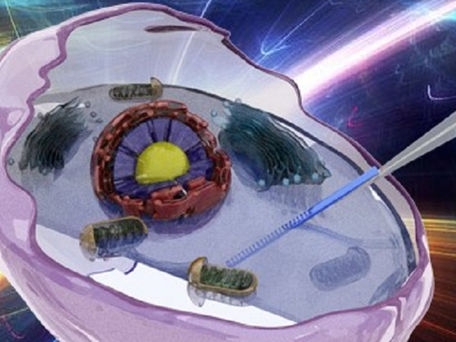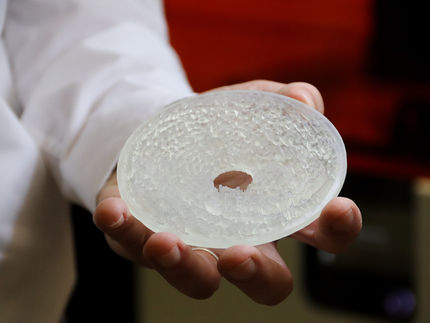MBL scientists find genes linked to human neurological disorders in sea lamprey genome
Discovery will accelerate research on Alzheimer's disease, Parkinson's disease and spinal cord injury
Scientists at the Marine Biological Laboratory (MBL) have identified several genes linked to human neurological disorders, including Alzheimer's disease, Parkinson's disease and spinal cord injury, in the sea lamprey, a vertebrate fish whose whole-genome sequence is reported in Nature Genetics.
"This means that we can use the sea lamprey as a powerful model to drive forward our molecular understanding of human neurodegenerative disease and neurological disorders," says Jennifer Morgan of the MBL's Eugene Bell Center for Regenerative Biology and Tissue Engineering. The ultimate goals are to determine what goes wrong with neurons after injury and during disease, and to determine how to correct these deficits in order to restore normal nervous system functions.
Unlike humans, the lamprey has an extraordinary capacity to regenerate its nervous system. If a lamprey's spinal cord is severed, it can regenerate the damaged nerve cells and be swimming again in 10-12 weeks.
Morgan and her collaborators at MBL, Ona Bloom and Joseph Buxbaum, have been studying the lamprey's recovery from spinal cord injury since 2009. The lamprey has large, identified neurons in its brain and spinal cord, making it an excellent model to study regeneration at the single cell-level. Now, the lamprey's genomic information gives them a whole new "toolkit" for understanding its regenerative mechanisms, and for comparing aspects of its physiology, such as inflammation response, to that of humans.
The lamprey genome project was accomplished by a consortium of 59 researchers led by Weiming Li of Michigan State University and Jeramiah Smith of the University of Kentucky. The MBL scientists' contribution focused on neural aspects of the genome, including one of the project's most intriguing findings.
Lampreys, in contrast to humans, don't have myelin, an insulating sheath around neurons that allows faster conduction of nerve impulses. Yet the consortium found genes expressed in the lamprey that are normally expressed in myelin. In humans, myelin-associated molecules inhibit nerves from regenerating if damaged. "A lot of the focus of the spinal cord injury field is on neutralizing those inhibitory molecules," Morgan says.
"So there is an interesting conundrum," Morgan says. "What are these myelin-associated genes doing in an animal that doesn't have myelin, and yet is good at regeneration? It opens up a new and interesting set of questions, " she says. Addressing them could bring insight to why humans lost the capacity for neural regeneration long ago, and how this might be restored.
Original publication
Other news from the department science

Get the life science industry in your inbox
By submitting this form you agree that LUMITOS AG will send you the newsletter(s) selected above by email. Your data will not be passed on to third parties. Your data will be stored and processed in accordance with our data protection regulations. LUMITOS may contact you by email for the purpose of advertising or market and opinion surveys. You can revoke your consent at any time without giving reasons to LUMITOS AG, Ernst-Augustin-Str. 2, 12489 Berlin, Germany or by e-mail at revoke@lumitos.com with effect for the future. In addition, each email contains a link to unsubscribe from the corresponding newsletter.
Most read news
More news from our other portals
Last viewed contents

AATec Medical reports significant progress in company’s first year towards unlocking the therapeutic potential of AAT - Major advancements in the development of ATL-105 for the treatment of inflammatory lung diseases
Intersection between nervous and musculoskeletal system could be key to treating Pompe disease
Evolva reaches milestone in BASF collaboration

Microchip detects vaccination gaps - A new microchip tests for antibodies against corona, measles, diphtheria and tetanus in parallel - with a single drop of blood

15 emerging technologies that could reduce global catastrophic biological risks
Rambutan

Seeing inside cells with an integrated nanowire probe - Real-time, in-situ sensing and tracking of cell development and maturation is achieved using a label-free nano-optical device
Deciphering how CD4 T cells die during HIV infection






















































